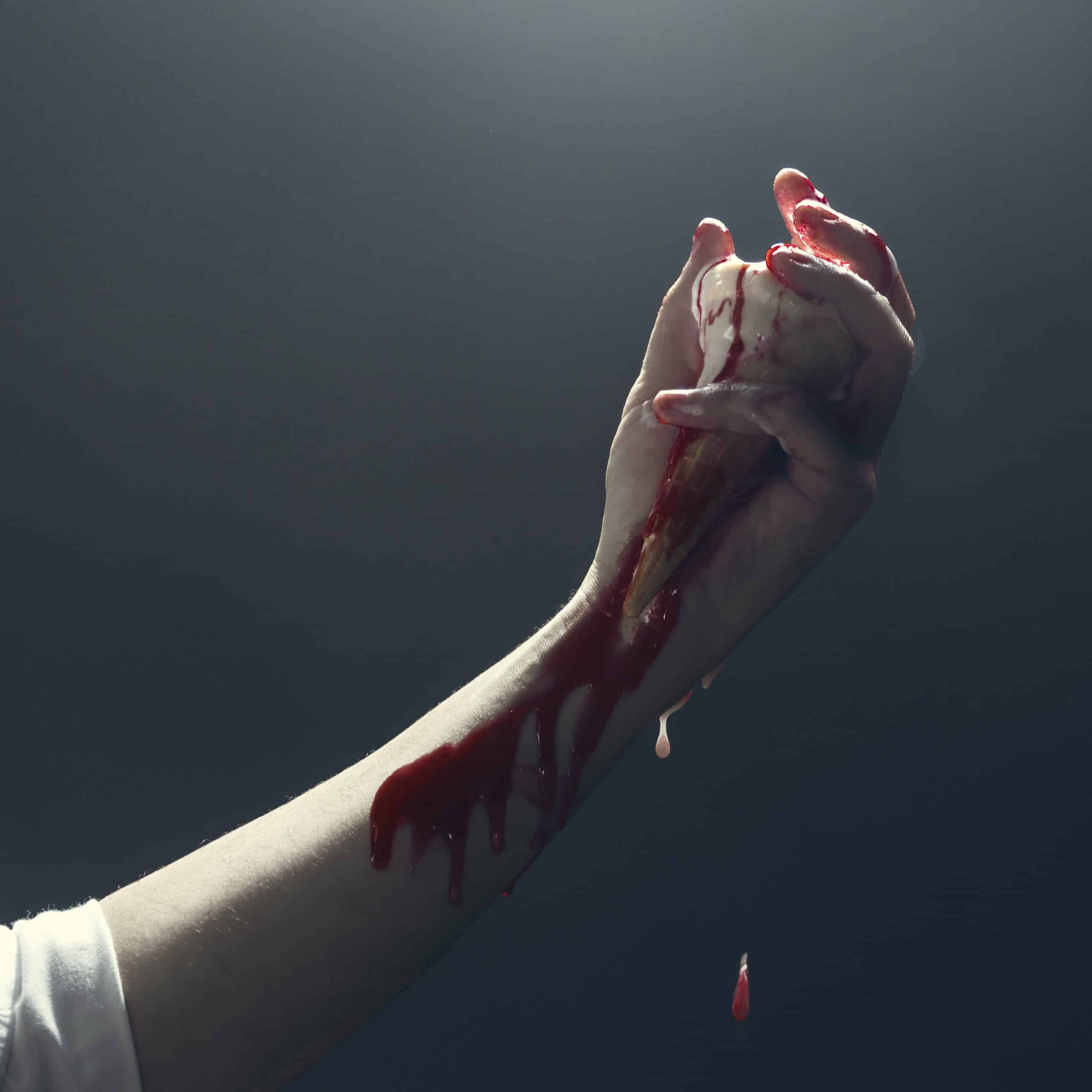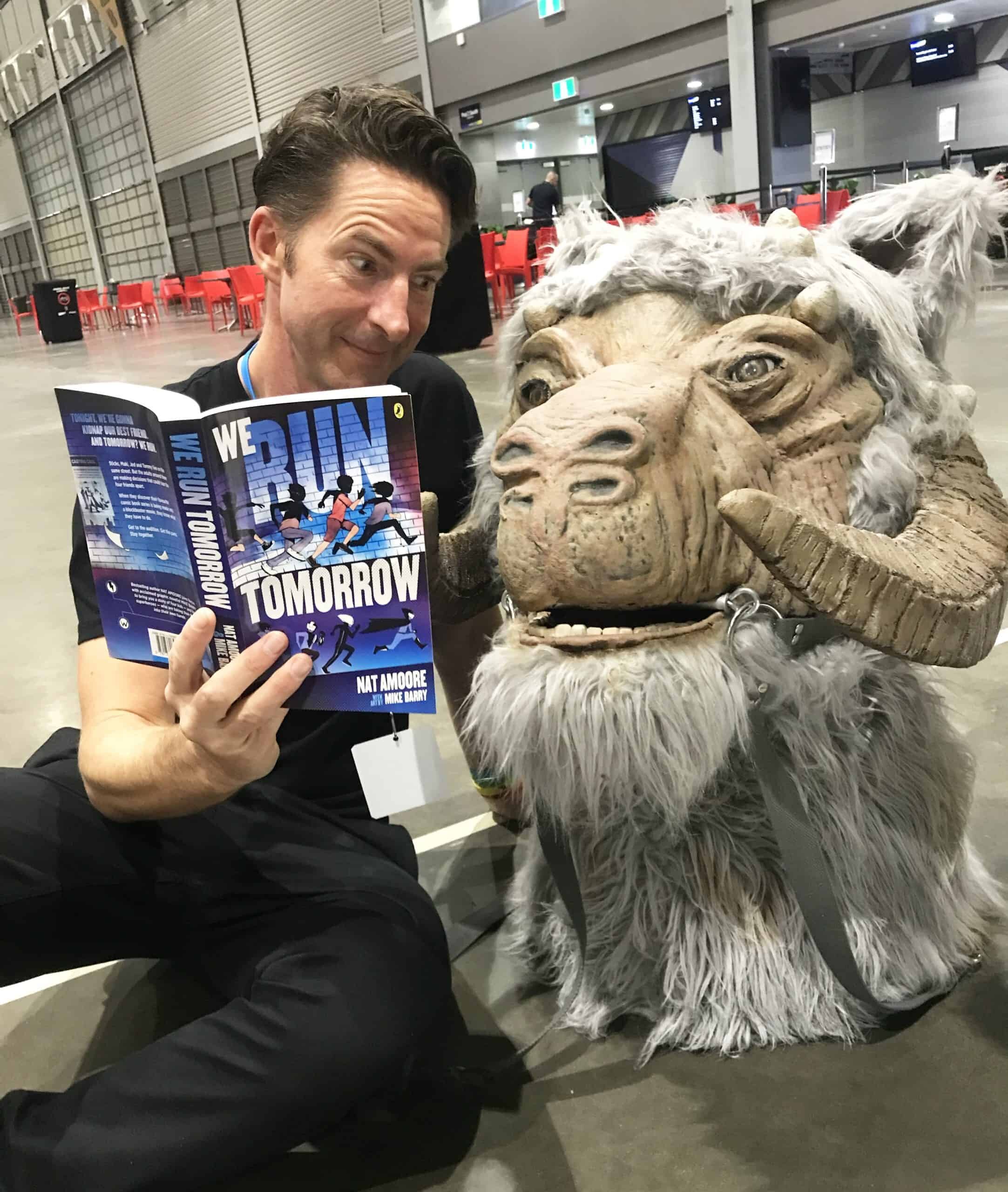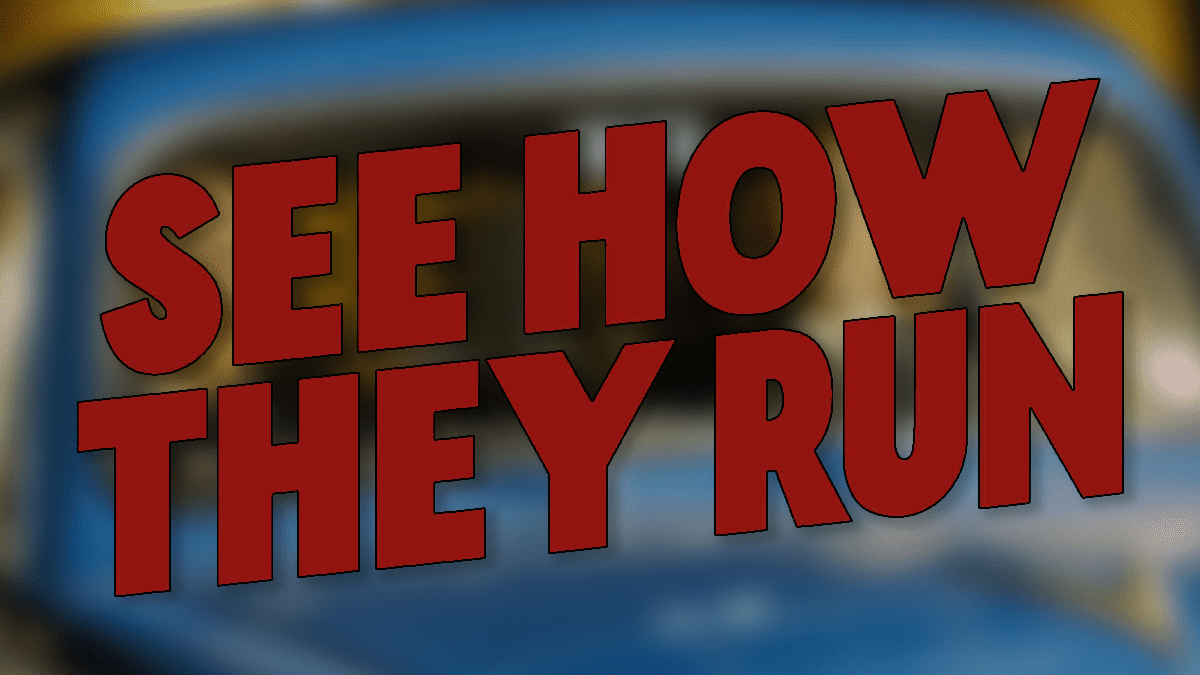Russell Olson’s Gateway City
We learn a lot from our past. From the political upheavals of societies that have risen and fallen to the artistic expression of cultures – both old and new. Through it all, there is the constant fear of resisting to change and humanity’s own fear of what is different.
Russell Olson’s Gateway City explores the beginnings of Modernism through the lense of what if starring a new kind of alien species. The idea of what if the roaring twenties had to deal with all sorts of different beasts and how would society respond to. Or, in this case, how would the Jazz scene, mobsters and corruption respond to it?
Here’s a story which does for the comic book world what Alien Nation did for Film and TV based science fiction in the late 80s/early 90s.

Gateway City is a period piece. It’s a comic enamoured with the debauchery of the Jazz age and the foul stereotypes of mobsters and corruption. What is it about this time period that attracts you? Why this period of time at all?
Russell Olson: The twenties is arguably the beginning of Modernism, but it wasn’t “modern,” so to speak. It was like the old world put on a costume and never took it off. There’s this kind of desperation to take on board all of the advancements that engineering, mechanics, and science were introducing as a way of fleeing historic poverty, disease, and relative grimness. But make no mistake, progress was just taking its first steps, all of the above mentioned were far from being left behind. I think I’m attracted to that sense of aspiration, and the reminder that a century on, we’re still only pretending to be truly modern.
It’s a period that–while I disagree with a lot of the comparisons–shares some resemblance to our current time: war of ideas; celebration of/mistrust of science; political and institutional corruption, populism; viewing our once familiar neighbors as strange beasts. But why make it a period piece? The aliens are on a kind of dark tourism day out. A bit of exploitative travel. They’re visiting a place they see as backwards, and I want the reader to have a kind of sympathy with that view.
I would worry that you’d have “cheering in the aisles,” Independence-Day-style, when the humans land a blow against the aliens if it were set today. And I suppose, if I set it too far back, like say, Roman times, well, we’d have to confront the fact that humans might deserve the persecution of the aliens. Do we want to be cheering on the retired soldier who has two slaves at home? I think the 20s allow us enough distance to see them as “other” but close enough to more than recognize the world in which they live.

The use of aliens is an interesting plot device. It forces the reader to look at Gateway City almost as if it’s a Fantasy comic and those elements are certainly in there. In fact, the ‘aliens’ spend more time looking and breathing like creatures of folklore and legend. What commentary are you providing to the reader here about this period in our history?
Russell Olson: In Gateway, I was largely looking at the horror captured in the work of post-WWI artists like George Grosz and Otto Dix, as well as the costumes, paintings, and architecture from the Dadists, early Art Deco designers, and to a certain extent the fascist Futurists. I wanted them to look vaguely recognizable, and I guess that’s pretty close to what our folklore monsters were: exaggerated natural beasts and humans.
The unicorns in Wonders of the East sound an awful lot like a rhinoceros; the dragons like komodo lizards. And people have always tried to strip humanity out of their rivals by making them into half-creatures or beasts. For an example of this other-ness, all you had to do was look at the Great War propaganda posters which would have filled the urban environment from Russia to America.
Ape-men, murderous eagles, demons, dragons, even anthropomorphic sausages. Much easier to convince young people to take up arms against a dragon than it is against someone who looks just like them. I think I’m digressing here, though. In Gateway, I suppose the message is wolves come in sheep’s clothing. But sometimes, wolves come as wolves.
Gateway City spends its time blending in between film noir, pulp and science fiction. That said, I want to touch on the fashion of the time. Your style certainly lends to the cultural fashion sense of your characters. What sort of research did you do when researching the fashion of the roaring 20s-40s? How important is it for comic book creators to research fashion styles when approaching their characters?
Russell Olson: When you’re doing a period piece, there’s a spectrum you fall along. It starts at “I shan’t draw a single button until I’ve held it, smelled it, tasted it” to “who cares how they held their pants up, get me to the tommy guns!” I’ve never knowingly sucked a button, but I fall closer to that side of research. For me, research in general informs your storytelling and in many ways offers you otherwise hidden narrative opportunities.
For example, in the first volume of Gateway City, I had written a chase scene between a crop-duster-type plane and a sedan. In my first draft, it was a zooming, thrilling, loop-de-loop of a scene.
But while I was doing visual research for the plane, I discovered a digitized flight manual from 1915 which described in very specific detail what the plane was and wasn’t capable of doing. Applying the grounded knowledge to the scene, in my view, made for a better scene. The driver of the car, Lundy, used to fly planes in the First World War. Instead of out-driving the plane, he simply applies his knowledge of how the plane operates to out-fox it.
Now, fashion. It’s a similar beast. “1920s person” is a common Halloween or fancy dress costume. So much so that our current idea of what that type of clothing looks like is actually quite a few miles off from the real thing. Maybe that’s being unkind. I guess it’s more of a pastiche of the real thing…as though women wore elbow length gloves and feathered headbands from morning until night. I think using accurate clothing is another way of drawing your reader into your world. Get it right and you can keep them locked in.
Drop in an unintentional anachronism and that link can get shaky. When I was putting together the character designs for Gateway, I scoured digital copies of period magazines, collected old photos from antique stores, and used the Missouri Historical Society website to get a clear idea of what the people of St Louis were specifically wearing. Picking the right attire for your characters can help a writer to get to know them better, too.
I’m not one who likes overly laborious character design. The thought of having to draw 1990s Cable 100 times in a single book makes me break out in hives. But smart styling allows an artist to quickly promote the uniqueness of each character.

The problem with the time period you’ve chosen is the two dimensional characters that have come out from it in previous works of fiction. It’s not your fault, of course. It’s more a reflection of the stories from that era. You seem to have made a conscious choice to add further layers to your characters and buck the stereotype. Take us through your character building process.
Russell Olson: I suppose the start of the process is the “write what you know” chestnut. The characters in Gateway have little bits and pieces taken from people I’ve known. None of them are a direct translation and quite a few of them have a little bit of me–different aspects, I hope. As for bucking the trend, I love the pulp stories, the hardboiled crime novels of the period, and some are better than others.
Dahsiell Hammett writes a great character: The Continental Op, though never named, is one of the most believable private dicks around. Maybe the prose of the time did a better job at building fully-fleshed characters and over time other generations have squeezed out the nuance.
When I’m writing characters, I do my best to get a defined voice in my head and a back-story. Where did they come from? What experiences shaped them? What do they want? What motivates them? How do they view the world? This is an area of writing where I’m by no means an expert, but I love doing. When two or more characters are in a scene together, I try to get a clear picture of what each one wants out of that interaction. It might literally be a thing, like money or an object, or it might be an agreement…it might even be emotional.
Knowing what each one wants, and how that serves the story allows you to be a more efficient storyteller. Well, me at least. If characters are completely driven by plot, it can feel a bit like a game of chess; the hand of the writer pushing the characters forward. I think you’ve got to let them find their own way.
Some of your critics have compared Gateway City to Dick Tracy but, on reflection, how do you see your work?
Russell Olson: There are certainly some visual similarities between the two and I’m honored by the comparison. Lundy’s profile is a little similar to Tracy’s, but he’s actually modeled off a few of my family members. In particular, the Olson nose with its protruding bridge. Then of course there are the melty-faced aliens which have a similarity to the rogues. There are a few other similarities, but Gateway isn’t really cops and robbers. In Gateway, the cops are just as crooked as the gangsters–maybe even moreso. And at the moment, at least, it isn’t “case of the month.”
I see Gateway as an ensemble piece. A Robert Altman-style comic, if you will. In the second volume, Lundy, who was the focus of the first, takes a bit of a back seat. Looking back at the question, if I try to boil it all down, I see it as a central howcatchem, in the middle of a paradigm shift. The whole Earth is a Universal fall guy for an unseen alien menace, but there are just enough chinks in the armor to allow the heroes of our backwater to be able to save the day. But there is no going back to a status quo, win or lose, the world will be different.

What works of fiction and art inspired the look and feel of Gateway City. How did they manifest into the final look?
Russell Olson: I mentioned artists George Grosz and Otto Dix. The grotesque decadence of the inner circle of alien invaders definitely comes from them. When I started drawing the book, I was looking at a lot of Chris Samnnee (mainly his work on Rocketeer: Cargo of Doom), Harvey Kurtzman, Al Hirschfield, Denis Bodart, and Milton Caniff. As the series has progressed, I’ve been more and more influenced by Alex Toth, Jordi Bernet, John Paul Leon, and Kyle Baker. I was also looking at the illustration work of J. C. Leyendecker, Norman Rockwell, and so many of the nameless illustrators of 30s pulp magazines.
I’d like to think that my linework is as expressive as Bernet or JP Leon, that the forms are as pared down as Toth and Hirschfield, that the storytelling is as dynamic as Kurtzman. It isn’t and I know that, but having their standard as an aspiration pushes me to grow with every page.
As for the story, I’m less in touch with my influences, but if I had to take a stab I’d say Hammett’s Continental Op stories, Rex Stout’s Nero Wolf books, Darwyn Cooke’s New Frontier, and in a very oblique way, P. G. Wodehouse. The most obvious of those is the Continental Op novel, Red Harvest. In Harvest, a remote mining town is beset by violent gangs who had overstayed their welcome after being bussed in to break up picket lines. The Op is brought in to bust up the gangs at the behest of the mine owner.
The Op, in a way, takes on the job but chooses the town itself as his client, seeing the mine owner and his cronies as being just as much of a threat to the people as the gangs. Gateway is a bit like that. You can get rid of the aliens, but you’ve still got the gangs and city officials and state politicians. But who knows? Maybe Lundy and crew can figure out some clever way of turning them all against each other? Time will tell.

You have patreon which you upload new pages of Gateway City to. Where does Gateway City go to from here? How has going from Patreon to Kickstarter changed your approach to comic book creation and marketing?
Russell Olson: For now, Gateway will continue as is: Patreon webcomic with quarterly tabloids and annual trades. I love the freedom the Patreon gives me, and the opportunity to produce The Gateway City Quarterly. I love the process of going from webcomic to newspaper comic. There’s a lovely anachronism to it that I enjoy. At some point, it would be nice to find a publisher for the stories, but that’s more about distribution than anything. For this Kickstarter, I’m trying something different: printing copies in the US and UK.
Ideally, I’d like to have the books in shops in North America and Europe and you really do seem to need a publisher to manage that. I suppose an indie could work it out, but you’d have to do an awful lot of admin work to set it up and that would just take too much time away from making the book itself. As for how the Patreon has changed my process, I initially started producing the pages for the tabloid-sized GCQs at a US comic ratio. Two and a half issues in I felt that I was wasting a lot of page space by not formatting the comic for the tabloid. It then dawned on me that there was no reason to keep the comic at US format.
I could essentially make the final comic whatever size I wanted, and A4 seemed like a good size (thanks to the nudges of Rich Hardiman at Comic Printing UK)…somewhere between a Bande Dessinée album and a US comic. I think it’ll be a great size and show off the art a bit more. The beauty of the crowdfunded indie titles is that audiences are getting more used to different formats, and creators taking risks. It’s a great time to be a reader and a creator.
As for marketing, I’m better at press releases than I once was and I’ve built a bigger audience by using Patreon and Twitter. However, when you see the success of some of the titles on Kickstarter, it makes you realize that there are potential readers out there who you’ve yet to figure out how to reach. I’m sure I’m getting better at it, but I think the bits of proof have sunk further down in my pudding. Building an audience takes time. Fortunately for me, I’m in it for the long game.
Subscribe to our Newsletter
RELATED ARTICLES:
1. INTERVIEW: Matt Battaglia embraces the Darkness in GHOSTS OF THE CAROUSEL
2. J. Gonzo on La Mano del Destino
3. Ricardo Delgado on Dracula of Transylvania
4. Bete Noir’s Andrew Clemson talks growth through Comic Book Writing







